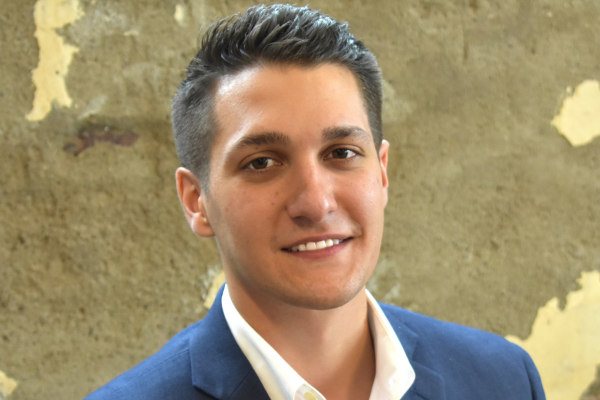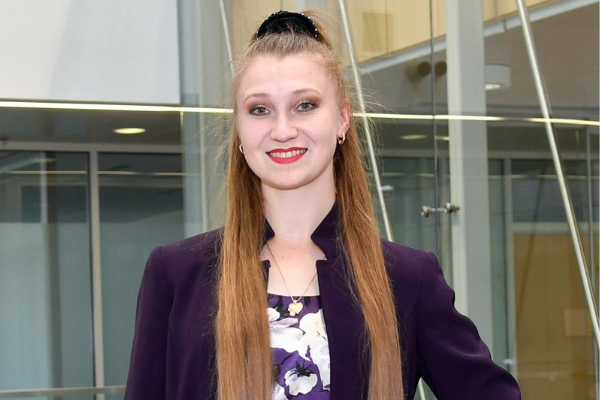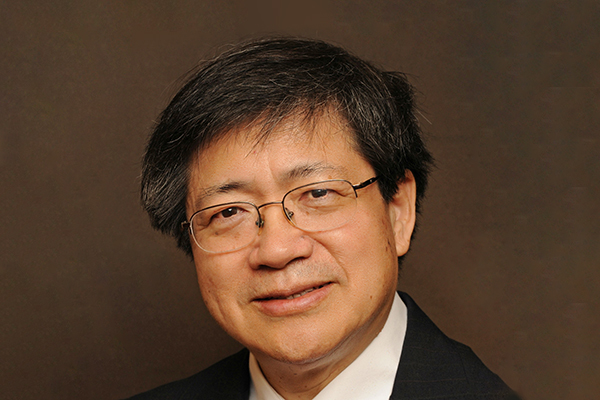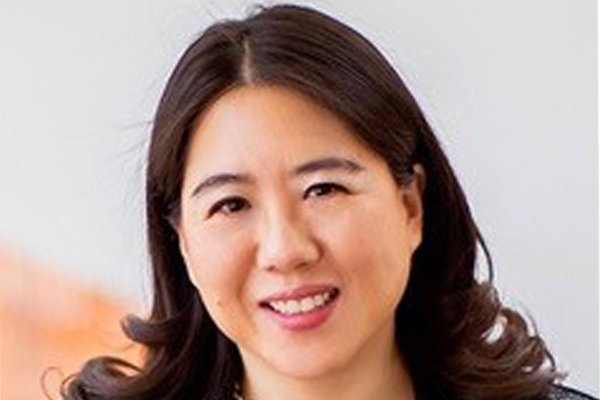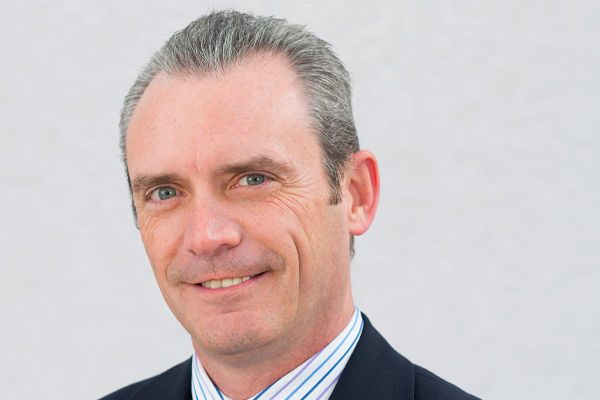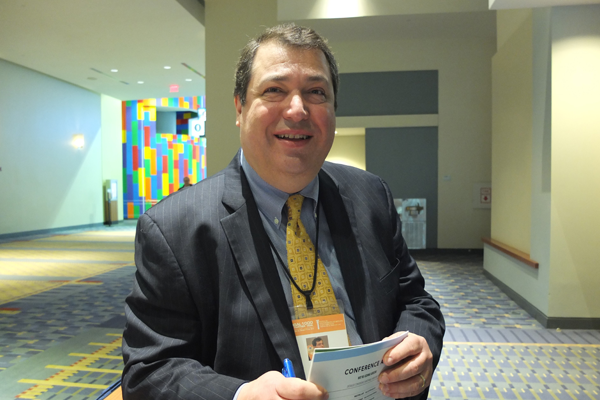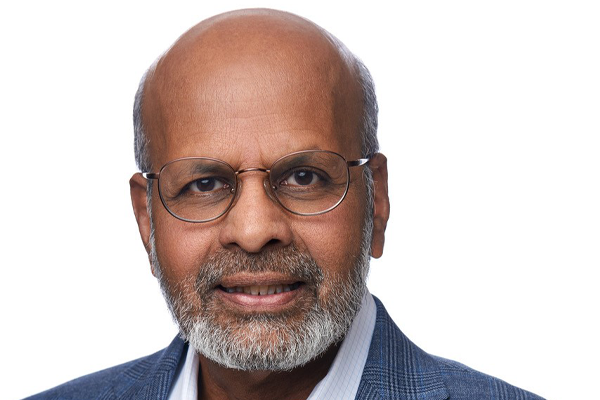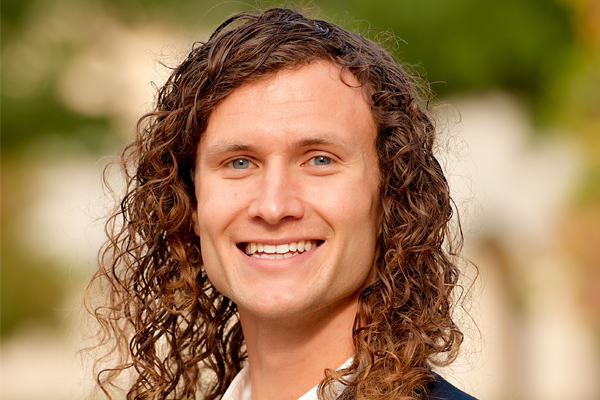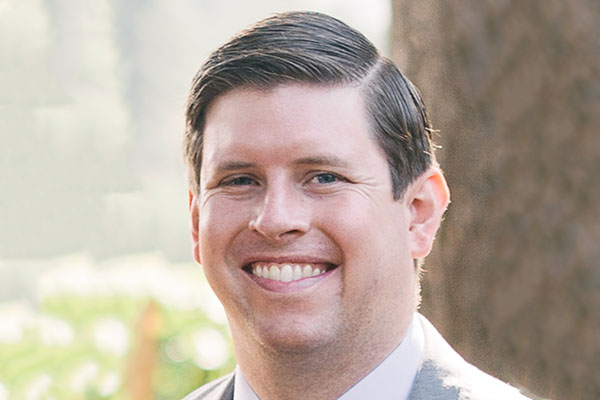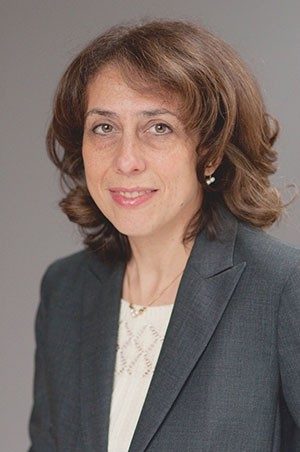
Dr. Yelena Kann is an innovative polymer scientist with over 28 years of industrial experience. She is a founder and CTO of Radical Plastics, a startup focusing on solving the environmental plastics pollution problems by either optimizing durable plastics’ stabilization and extending their service life or making the single use plastics biodegradable. The latter approach supports recyclability and utilization of polymers with best LCA profiles, but transforms inevitably leaked into the environment plastics into useful biodegradable materials. Yelena has previously worked at Metabolix, E Ink, Sabic Innovative Plastics, Omni Guide and Lynn Plastics, where she was developing new technologies and innovative materials. She has over 30 published papers, 20 patents and patent applications and received a number of technical awards
Yelena has a Ph.D. in Chemistry from the University of Sussex, UK, where her supervisor was the most recognized expert in the area of polymer degradation, Prof. N.C. Billingham.
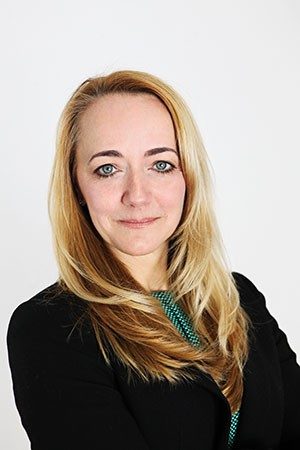
Kristin Taylor, CEO and Cofounder of Radical Plastics, has a Masters Degree in Plastics Engineering and over 25 years’ experience in the plastics industry. Ms. Taylor has served in technical, sales, business development and management roles in several multinational organizations including ExxonMobil Chemical (OPP Packaging Films Division), Metabolix Bioplastics, Sabic and Huntsman Corporation. She has extensive experience in market development for commodity, engineering and biobased /biodegradable plastics and has worked with major brand owners such as P&G, Colgate Palmolive, Unilever, Kimberly Clark, Aveda, Nike and Newell Rubbermaid to bring award-winning products to market. In her spare time, Ms. Taylor enjoys long distance running and has completed marathons in six countries including all of the World Marathon Majors.
You both have extensive experience working in the plastic industry with bioplastics and more--what makes the technology of Radical Plastics different than those of your former employers? What was lacking that you brought to the market?
YK: We had a very exciting technology at Metabolix. It still sounds like science fiction to me: genetically engineered microorganisms, being fed by any source of sugar or oil, produce aliphatic polyester molecules in their cells and store them just like we store fat. These polyesters (polyhydroxyalkanoates, PHAs) are chemically extracted resulting in a ready-to-process, biosynthesized polymer. We were so fortunate to have a very talented team of synthetic biologists. They could make any polymeric molecule for us to test. Unfortunately, the technology was too expensive. Our PHAs could not compete with commodity polymers used in the markets we were targeting. In addition, processing these polymers was very challenging and their thermal and physical properties were significantly inferior. So, the Metabolix technology struggled to become fully commercial. But we learned a lot through this process, including which markets are suitable for biodegradable plastics, property requirements, costs requirements and how to manage the complex competitive landscape.
KT: Working in the bioplastics market, we learned that any material that was going to replace conventional plastics on a large scale had to have competitive economics, robust physical properties and ease of processing on existing equipment. Many bioplastic materials have tried to position themselves as a replacement for conventional plastics but have been limited to niche applications because of one or more of these issues. What makes the Radical Plastics technology different is that it’s a true drop-in replacement for regular plastics. RP compounds have outstanding physical properties, can easily be processed on existing equipment and can be produced at a similar cost. AND RP compounds can be recycled along with conventional plastics so they support the circular economy.
How did you establish/find information on your initial target market?
YK: Our goal was to re-visit the biodegradable plastics market in order to offer a truly affordable, environmentally friendly technology. This would allow us to recognize the value of plastics while not contributing to the massive problem of plastic waste in the environment. We focused first on an application that requires functional biodegradability, i.e. agricultural mulch films. Luckily, EN17033:2018, the European specification for soil biodegradable mulch film had just been published so we had a clear guideline. We also met with over 60 farmers, learned about their needs (which crops, cycles, price, properties) and discussed their pain points (huge amounts of plastic waste which were expensive to dispose of).
KT: Mulch film is a $4B market so it’s an excellent starting point. Longer-term, we aim to address the flexible packaging market, which is a $150B global market with a very urgent environmental problem. For this market, biodegradability is not a functional requirement but a secondary benefit. We now have the ability to design plastics that are useful, economical and recyclable but if they escape collection and end up in the environment (soil, aquatic), they will cleanly and completely biodegrade. We are talking to potential customers in flexible packaging to understand their sustainability goals and product requirements.
Our goal is to make a meaningful contribution in the battle against plastic pollution. The $150B flexible packaging market is an obvious target market. However, many people don’t realize how complex packaging really is. There are requirements around strength, barrier, appearance, printability, sealability, coefficient of friction, etc. It’s not as easy as it looks. We decided to start with agricultural mulch film for many reasons. First, making a 1 mil black mulch film is technically easier than a packaging film that has extremely stringent technical requirements. Second, as Yelena mentioned, there’s now a STANDARD that we can shoot for. A clear target in EN17033:2018. And finally, because we’re providing a functional advantage – soil degradability – which allows farmers to save time and money, we can go in at a higher price point. Packaging is extremely price competitive. Proving out this technology in agriculture will allow us to develop data and case studies that will accelerate our entry into the larger packaging market.
Yelena, on the "Our Team" page of the Radical Plastics website, it says that you have over 20 patents and patent applications in bioplastics, polymer chemistry and color technology--what do you think set your patents apart from other applications, what do you believe helped make your patents successful?
YK: I have always tried learning as much as I could from existing technologies. If something was lacking, I created my own solution. This included not only products but test methods, mechanisms of stabilization, formulation, processing, etc. I enjoy innovating and feel very happy when I see the products I helped create being used in our everyday lives. I remember the excitement I had when, while driving, I could see many cars on the road with our (Lynn Plastics) plastic exterior trim. It was from the early 1990s to 2005 when Lynn was supplying all major American automotive OEMs. The plastic trim had complex metallic/interference look (the color very much depended on a viewing angle or the time of the day), and I was critically evaluating if it matched the rest of the painted body and if it was aging right.
Then I came up with the idea for the polymer used in hollow photonic optical fibers used in minimally invasive CO2 laser surgery. Once, my son needed a sinus surgery and his doctor showed me that he was using our OmniGuide fibers. This was very exciting!
Another interesting development was at Metabolix where we have made all the components of the first totally biodegradable diaper - from the films, to the elastic fibers, the nonwovens and tapes. The diaper ended up being too expensive to commercialize, but we were the first ones to demonstrate the processability of PHA bioplastic into all these forms.
I’m happy to be able to contribute to many different technologies. It is a lot of fun!
What do you both believe led you to become entrepreneurs?
YK: The desire to build a new technology to address the problem of plastic pollution. The desire to participate in the fate of plastics discussions, in a redesign of plastics, in enabling plastics to continue their unbelievable service to us, but also in making them more environmentally friendly. We felt that we have a lot of knowledge and experience in this area and should step up to lead the development of new products.
KT: I was compelled into entrepreneurship because I had the very rare opportunity to really make a difference in the world. I had spent the first half of my career in flexible packaging and saw the incredible amount of non-degradable plastics that were being sold into that market. Knowing that these materials, if leaked into the environment, would last forever was so disheartening. But I didn’t see a better solution. Plastics are such useful materials and they have made our lives better in so many ways. Being able to use my knowledge and experience to introduce this novel, non-polluting plastic to the world was an opportunity I couldn’t resist.
How did you come up with the idea for Radical Plastics?
YK: I have worked with pretty much all types of known bioplastics and followed all new developments in the area of biodegradable plastics over the last 20 years. Commercial polyester-based bioplastics need high temperature composting for biodegradation. They will not degrade in the ambient environment. But the most polluting plastics, polyolefins (polyethylenes, polypropylene), can degrade in the ambient environment with the aid of a catalyst! We came up with a very unique source of the catalyst and are formulating the plastic composition based on the application requirements. Also, in addition to being ambient biodegradable, our plastics are economically attractive, easily processable, have great physical properties (including excellent transparency) and are fully recyclable.
KT: Yelena and I worked together at a bioplastics company, Metabolix, for nearly seven years. So, we became very familiar with the market and the challenges that bioplastics face; specifically, high price, difficulty in processing, inferior properties and lack of recyclability. Any solution to the plastic pollution problem had to be economically attractive, had to have the same outstanding properties and had to fit into the existing plastics infrastructure. We realized that, in order to really gain market traction, we needed a drop-in replacement for regular plastic. Yelena had been trying to formulate a catalyst that would initiate a free radical reaction within polyolefins, the most polluting plastics, when she discovered a natural material that had the ideal chemical composition. She sourced some of this natural mineral material and after some bench-scale testing and actual testing of films in her backyard, she proved that it worked. We could finally start to design these materials according to the application needs, but ensure that if they leaked into the environment, they wouldn’t last forever and wouldn’t create microplastics. From then on, our mantra became Reduce, Reuse, Recycle AND Redesign!
Are you looking for any collaboration? If so, who/what would be your ideal collaboration?
YK: Yes! Based on our current business model, we use toll compounders, film extruders, third party testing labs, etc. We are just starting our collaboration with Cornell University College of Agriculture and Life Sciences to test for soil and plant health, crop yields and biodegradation rates. We are also working with some potential strategic partners in polymer manufacturing, compounding and extrusion. We are very interested in such collaborations as they can provide the expertise we do not have (such as in Ag science), allow us access to specific equipment, and can potentially expedite our development and shorten our time to market.
KT: We are very open to discussing collaboration with industry partners. We are currently using toll compounding to make our materials but would be looking to collaborate with resin suppliers and converters as we validate the technology and work toward commercialization.
What was the biggest challenge you both have faced getting Radical Plastics to where it is now?
YK: Learning how to start a company, to create a good business plan, marketing strategy, how to talk to investors and get funded, where to make compounds and films, where to test final products, how to reach out to customers. One of the first things we did was to join the CleanTech Open accelerator in Boston. It is an excellent program, pretty much a boot camp for business training with an outstanding curriculum, workshops, mentors and unbelievable support. They taught us everything we needed to know to get to where we are now. We closed our seed round of financing in August of this year and are on our way to demonstrate the performance of the products and their compliance with the standards that we are targeting.
KT: I think the biggest challenge that we faced while starting Radical Plastics was getting funded. Learning how to convey our value proposition and business plan to investors who were unfamiliar with the plastics market was certainly difficult. But CleanTech Open gave us a great head start and provided us with many tools that helped guide our fundraising journey.
Kristin, what was your favorite marathon to run--where and why?
KT: I always love running Boston because it’s my hometown race. The course is challenging but the crowd is absolutely incredible, and they really carry you through the finish. But I think that my favorite marathon was Tokyo in 2018. The weather was perfect, the course was beautiful, the people were so gracious and that’s where I finally earned my six-star medal.
What makes your plastics “radical”?
YK: We are using free radical chemistry to provide a radical solution to plastic pollution.
What are the public policy implications of your work? For example, how does this reduce plastics in the ocean?
YK: It has been reported that the majority of plastics in the ocean come from land. Our plastics are designed to be soil biodegradable so they may degrade before reaching the ocean, especially in warm climates. But if they happen to reach the ocean, they will also biodegrade. Once outside, our materials will be exposed to UV light which will trigger the abiotic stage of the degradation. After that, natural microorganisms, which are abundant in oceans and other aquatic environments, will digest them in the second stage of biodegradation. While we would never promote polluting the environment, the reality is that all of our collection systems are leaky and plastics will continue to find their way to the ocean. We are designing plastic materials that serve their purpose but have a finite lifespan if they end up in the environment.
Yelena, what is your connection to ACS and do you see it evolving/changing?
YK: I have been a member of ACS for over 20 years. The C&EN magazine is my favorite periodical! I love it and have learned so much from reading it my entire professional life! I was also very happy to participate in the roundtable discussion on “The Plastics Dilemma” organized by the National Academy of Sciences and ACS in May of 2019. It was such a great honor to participate and discuss the future of plastics at that conference! I also love ACS sponsored webinars. I’ve listened to them for years and have found them to be a great resource. I would love to be able to give back to ACS. Please let us know what we can do to support the organization (other than being members).
Anything else that you want to share?
YK: I used to play a lot of classical piano in my childhood and everybody thought that I would become a professional piano player. But when I was a junior in high school, we got a new chemistry teacher, who opened the world of chemistry to me. I so much fell in love with it, that I started participating in chemical Olympiads and went on to study chemistry instead of music in college. I ended up being introduced to Prof. Norman Billingham at the University of Sussex, UK, the most recognized scientist in the area of polymer degradation and stabilization (editor of Elsevier Polymer Degradation and Stability), who became my Ph.D. advisor and a lifelong friend and mentor. I still play piano, but have very little time for it.
I also spent about 20 years rock climbing and mountaineering. I have climbed high mountains all over the world: the Himalayas, Andes, Alps, Rockies, Alaska. I guess this built my character, honed my survival skills and taught me about teamwork and taking on great challenges and responsibilities.
KT: I think that plastics, and chemistry in general, get a bad rap. There’s this misconception that chemists are holed up in their labs twisting their proverbial mustaches designing evil substances to contaminate the world. When, in my experience, nothing could be further from the truth. Chemists and plastics engineers are smart, conscientious people who are eager to make a positive difference in the world. The average consumer frequently doesn’t realize all the benefits that chemistry and plastics have brought to our lives - from functional fabrics to transportation to safe food packaging and that phone in your hand. Plastics are one of the greatest inventions of the last century. But in our quest to design materials that are super durable we’ve created an environmental nightmare. We need to start thinking about how to redesign plastics so they meet the needs of the application without polluting the planet. We believe that Radical Plastics can contribute to that effort.
This article has been edited for length and clarity. The opinions expressed in this article are the author's own and do not necessarily reflect the view of their employer or the American Chemical Society.
Copyright 2020 American Chemical Society (All Rights Reserved)

